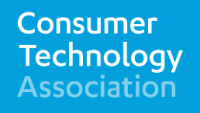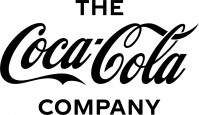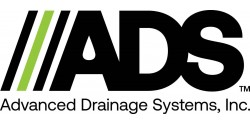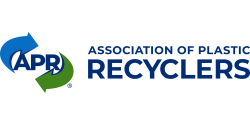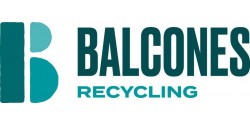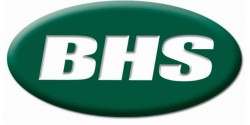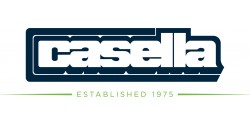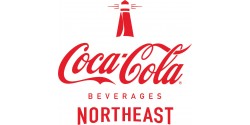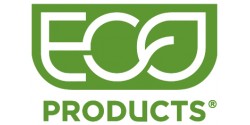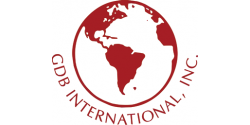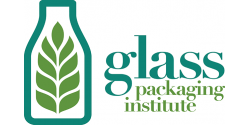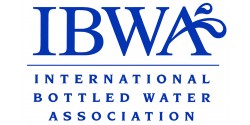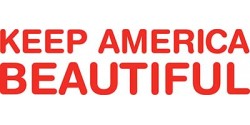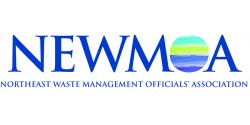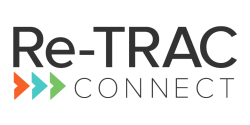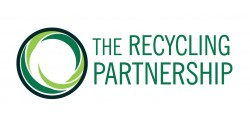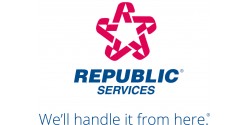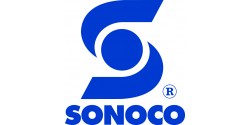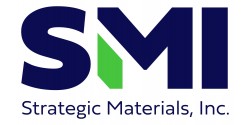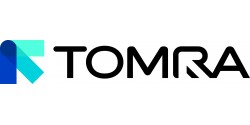March 2009
MEMBERSHIP
Renewing Sustaining Member
Renewing Supporting Members
- Castle Ink Cartridges
- J.M. Murray Center
NERC NEWS
- Power of Purchasing – A Two-Part Webinar
- Recycling Economic Information Study Update Completed
- Bringing Manure Management Education to Farmers
- NERC’s Power of Purchasing Webinars Offer Opportunity for Purchasing Discussions
- Holding an Unwanted Medication Collection - Presentation Posted
TOXICS IN PACKAGING CLEARINGHOUSE NEWS
STATE UPDATES
CONNECTICUT
- Digital Dilemma
- Considering Buying a New TV? Look for the EnergyStar Logo
- Chippy, the Recycling Chipmunk
- Trayless Eating 101
- Greening Electronics
MASSACHUSETTS
- Nickels for Recycling & Water Ratepayers
- Solid Waste Master Plan Update
- Update on 2007 Solid Waste & Recycling Data
- Massachusetts Colleges & Universities to Meet
RHODE ISLAND
ADVISORY MEMBER NEWS
- Steel: Making Products Green in Today’s Carbon Footprint World
- PROP Announces 19th Annual Conference Location
To join the EMail Bulletin list…
Send an email to executive.director@nerc.org making the request. Please be sure to include your full name and organization.
NERC's mission is to advance an environmentally sustainable economy by promoting source and toxicity reduction, recycling, and the purchasing of environmentally preferable products and services.
State and Advisory Member Updates are provided as submissions to NERC and may not reflect the policy or position of the Northeast Recycling Council, Inc.NERC is an equal opportunity provider and employer.
TOPICS
MEMBERSHIP
We are delighted to welcome Casella Waste Systems as a renewing Sustaining Member, and Castle Ink Cartridges and the J.M. Murray Center as renewing Supporting Members. Thank you! Especially in this troubled fiscal time, this demonstration of support for NERC is appreciated.
A hallmark of NERC is the strength of multi-stakeholder involvement and problem solving. This is a direct result of the active participation and support of NERC’s Advisory Members.
To see a listing of Advisory Members and the benefits of membership, visit the NERC Advisory Membership web page.
The broad spectrum of interests represented by NERC’s Advisory Members and Board Members and their willingness to participate significantly contribute to the unique and important role that NERC plays in recycling in the region.
NERC NEWS
Power of Purchasing – A Two-Part Webinar
March 17, 1:30 - 3:00 Power of Purchasing, Part I – Beyond the Basics of Green Purchasing
Two experts will reveal how you can:
- Save money
- Dispel myths
- Tackle skepticism
- Locate resources
- Measure environmental impacts
Speakers
- Scot Case, Vice President, Terrachoice Environmental Marketing
- Chris O’Brien, Director Responsible Purchasing Network, Center for a New American Dream
AND
March 31, 1:30 - 3:00 Power of Purchasing, Part II – Reality of Buying Common Products
A panel of three state purchasers will share their experiences and successes in purchasing specific green products.
Products and Speakers
- Paper Products - Deborah Damore, Chief Procurement Officer, Vermont Office of Purchasing and Contracting
- Green Cleaning Products - Marcia Deegler, Director Environmental Purchasing, Massachusetts Operational Services Division
- Electronics – Don Greene, Assistant Director of Purchasing, New York State Office of General Services
Recycling Economic Information Study Update Completed
Recycling and reuse fuel a $35 billion annual industry in Delaware, Maine, Massachusetts, New York, and Pennsylvania, according to a new report just released by NERC. The research, which updates NERC’s 2000 Recycling Economic Information Study, found that more than 11,000 recycling and reuse businesses employ over 100,000 individuals in the five-state region, and pay them wages that exceed $4.2 billion.
The business of recycling also yields significant environmental benefits. Each year, recycling operations in the five states save the amount of energy needed to power close to two million households, and avoid almost 1.25 MTCE of greenhouse-gas emissions – equivalent to taking 2.8 million cars off the road, according to an estimate by NERC based on the study’s findings.
The Recycling Economic Information Update was prepared by DSM Environmental, Inc. and MidAtlantic Solid Waste Consultants on behalf of NERC and the five participating states. The research included several significant changes to the methodology that was used in the 2000 Recycling Economic Information Study to examine the economic impacts of the industry, said NERC Executive Director Lynn Rubinstein. “The changes were designed to more accurately estimate the economic contribution of the recycling industry in the five participant states for the year 2007,” said Rubinstein. “Those changes also make it difficult to compare the studies to one another,” she added.
The complete report is available on the NERC website. For more information, contact Lynn Rubinstein.
Bringing Manure Management Education to Farmers
Workshops for small farm and livestock operations held through NERC’s Manure Management Education project continue to be a success. Nineteen people attended a workshop in November at the Cheshire Horse in Swanzey, NH. The workshop was co-sponsored by The New Hampshire Horse Council. A small scale in-vessel composting demonstration was held in conjunction with the workshop. The demo and workshop were featured in Country Folks New England magazine.
Another workshop was held in late January in Chester, NH. Co-sponsored by the Rockingham County Conservation District and the Town of Chester Conservation Commission, the event was attended by 29 people. In addition, NERC conducted a workshop at the Northeast Organic Farming Association of Vermont (NOFA-VT) on February 15th. This popular agricultural conference brings in some 1,400 farmers from around New England. Thirty-nine people attended the manure management workshop.
Athena Lee Bradley, Manure Management Project Lead, will also be presenting "Manure Management for Sustainable Agriculture and Small Livestock Operations" at the BioCycle International Conference 2009 in April in San Diego, California.
NERC’s Manure Management Project is funded by a U.S. Department of Agriculture Rural Development Solid Waste Management Grant. For more information contact Athena Lee Bradley, NERC Projects Manager.
NERC’s Power of Purchasing Webinars Offer Opportunity for Purchasing Discussions
The states of Delaware and Vermont will be using NERC’s Power of Purchasing Webinars as a springboard for in-depth discussions on green purchasing. Both states will offer a central location for participants to listen to and view the webinar presentations and will offer facilitated discussions after the webinars to further green purchasing.
Holding an Unwanted Medication Collection - Presentation Posted
If you’re interested in a PowerPoint presentation about how to hold a safe and legal unwanted medication collection, it’s now available for you on the NERC website. Based on the recent NERC guidance document, the presentation explains the key points that need to be considered, including why to hold an event, which laws are relevant, staffing, and other considerations. For more information, contact Lynn Rubinstein.
TOXICS IN PACKAGING CLEARINGHOUSE NEWS
TPCH Amends Model Toxics in Packaging Legislation
Member states of the Toxics in Packaging Clearinghouse approved several revisions to the Model Toxics in Packaging Legislation in December 2008. These changes are now reflected in the Model Legislation and in a summary document posted on the TPCH website.
Several of the changes modified existing exemptions to the toxics in packaging requirements, including:
- Exemption 5c: Recycled Materials. The 2008 revisions to the Model established a maximum concentration limit of 200 ppm for the sum of the four restricted heavy metals (lead, cadmium, mercury, and hexavalent chromium); and created a permanent exemption with the removal of the expiration date for this exemption.
- Exemption 5e: Reused and Regulated. The amendments added a requirement that a regulated entity notify State Administrative Agencies of the applicability of this exemption; and the expiration date for the exemption was extended from January 1, 2010 to January 1, 2020.
- Exemption 5f: Controlled Distribution and Reuse. The revisions extended this exemption to January 1, 2020 as well; and added a requirement that entities seeking an exemption provide a brief description of their efforts to find alternatives to the restricted heavy metals.
Finally, the 2008 revisions to the Model Toxics in Packaging Legislation removed the “phase in” provision for compliance. When the Model was first approved almost 20 years ago, the drafters phased in the maximum concentration limit for heavy metals in packaging over four years (from 600 ppm to the current 100 ppm) to provide regulated entities with time to reformulate packaging components to meet the requirements. Since the Model and most state laws based on the Model were passed before 1995, there was no need to continue this provision. California, the most recent state to pass Toxics in Packaging requirements in 2003, did not include the phase in provision.
STATE NEWS
If you watch TV at all, for the past year or so you have probably been aware of the banner on your screen announcing the arrival of digital TV on February 17, 2009 – which has recently been extended to June of this year.
What does this change from analog to a digital signal mean for the average person? If you subscribe to cable TV or have a satellite dish, the change will probably not impact you in the least. But if your TV is older and has an analog tuner or you use rabbit ears or an antenna to get reception, you have some decisions to make sure you don’t miss a single episode of American Idol.
You may think you need to get a new TV. But wait…you don’t have to! By using a converter box, you can continue to receive the broadcast signal. The boxes are available through major electronics retailers. For more information, visit the FCC’s digital conversion web page.
If you do decide to get rid of your old TV and purchase a new one, be sure to recycle it. In Connecticut, some towns and cities are currently offering electronic waste recycling at their transfer station. Eligible municipalities can also recycle their televisions through any of the Connecticut Resources Recovery Authority one-day collections. Residents can check with their municipal recycling contact to find out if there are any other options.
If Connecticut residents can wait until fall 2009, there is another option. All municipalities will be required to provide for the safe and convenient collection of electronic waste, which includes televisions. The cost will be picked up by the manufacturers so there will be no cost for the towns and no fees can be charged to the residents.
Considering Buying a New TV? Look for the EnergyStar Logo
There are about 275 million TVs currently in use in the U.S., consuming over 50 billion kWh of energy each year — or 4 percent of all households' electricity use. This is enough electricity to power all the homes in Connecticut for almost 5 years!
When shopping, look for the ENERGY STAR label - you can find it on everything from standard TVs to the largest flat-screen plasma TVs. ENERGY STAR televisions use about 30% less energy. Be aware that even though that big new TV is ENERGY STAR qualified, it may use more electricity than your old one, depending on the type and size you choose. For example, a 50-inch plasma TV uses about 300 watts compared to 100 watts for a 32-inch LCD model. Visit ENERGY STAR for more information.
And remember — don’t trash that old TV, recycle it.
Chippy, the Recycling Chipmunk
The Girl Scouts of Troop #10809 in Glastonbury, Connecticut, wanted to teach the community — children, teachers and parents — about how important it is to recycle to help our environment. So the scouts came up with a fun project to earn their Girl Scout Bronze Award and accomplish this goal.
The nine girls in the troop, ages 10-11, created a book entitled Chippy, the Recycling Chipmunk. In the story, Chippy visits different areas of a school to make sure that the proper items are being recycled. Each scout wrote and illustrated a page that covers one of the 11 items that are required to be recycled in Connecticut. The colorful book is full of facts and includes a fun section where readers can hunt for “hidden” details.
The troop donated the book to each of the six elementary school libraries in town and to the Connecticut Audubon Society of Glastonbury. The girls would like you to help Chippy continue to spread the word about the importance of recycling -- “Tell your family and friends and together let’s make a difference!”
Have you ever been to one of those all-you-can-eat restaurants where you pick up a tray and pile it high with tempting selections you can’t refuse or possibly consume? After seeing all the leftover food on your plates, your mother would probably say that your eyes were bigger than your belly!
This scene is replayed at every meal at college dining halls and some food service providers think they have a solution to it — looking for ways to contain the escalating costs of feeding the college community, cut waste disposal fees and conserve energy and water, hundreds of food service operations across the country are removing the food tray from campus dining areas.
Aramark, a food service provider for more than 500 campuses in the U.S., found that removing the tray reduced the per person waste from 3.0 ounces to 1.8 ounces per meal. They also found that it takes between a 1/3 – 1/2 gallon of water to wash one tray, plus the cost of detergent, drying agents and energy used to heat the wash water.
In the spring 2008, the University of Connecticut (UCONN) Dining Services decided to jump on the bandwagon. With the help of CONNPIRG and Eco Huskies (UCONN Office of Environmental Policy), they developed a program to pilot trayless dining for one meal per day in one dining hall for one week. At the end of the pilot, staff estimated they saved 760 pounds of food from being wasted and conserved 913 gallons of water. In the fall 2008, they removed trays from 7 of the 8 cafeterias at the Storrs campus. Since UCONN serves 130,000 meals per week the savings and environmental benefits can be substantial.
But change is not always easy and the trayless system at many campuses, including UCONN, has some problems that needed to be addressed. Denise Beal, Assistant Food Service Director at UCONN said that they took care of student complaints about juggling plates and spillage by placing silverware in more than one location and putting plates and cups closer to the food. Staff has been reassigned to clean spilled food and remove plates from tables. Beal said that the system is a big success and has benefits beyond being “green” — it is also supported by the University’s nutritionist because students may eat less and avoid putting on extra pounds.
UCONN Dining Services is taking sustainability of its dining services beyond the trayless system. They have eliminated a lot of paper waste by installing dispensers that dole out napkins one at a time and they serve as much local food as possible, including honey from their own bees.
Aramark estimates that over 50% of their collegiate clients will be trayless next year. So this is a trend that is likely to continue. It just might extend to your kid’s school cafeteria, your cafeteria at work and maybe that all-you-can-eat restaurant.
Let’s hear from you! We’d like to know what you think about going trayless -- good for the environment or an inconvenience? What to do with all those unused trays? Maybe lunch tray tobogganing can become a collegiate sport!
Food Waste Facts:
Food leftovers are the single-largest component of the waste stream by weight in the US. Americans throw away more than 25 percent of the food we prepare, about 96 billion pounds of food waste each year. In 2007, almost 12.5% of the total municipal solid waste generated in US households was food scraps and less than 3% was recovered. The rest was thrown away and disposed in landfills or combusted in incinerators. Source: EPA’s Organic Wastes web page
CT DEP marked America Recycles Day by joining the Northeast States Electronics Challenge (SEC) to reduce the environmental impact of electronics products that we purchase, use and need to replace.
Commissioner Gina McCarthy said, “DEP is offering an example of the type of actions everyone can take to make a real difference for our environment and to reduce the amount of waste we generate. Through the Northeast States Electronic Challenge DEP is committed to purchasing ‘greener’ computer products, taking steps to reduce the energy demands and impact of computers during use and making certain that we properly manage the disposition of obsolete equipment.”
For example, based on the recently udpated EPA-supported Electronics Environmental Benefits Calculator, it is estimated that for every 1,000 “green” computers purchased and recycled, CT DEP will:
- Reduce electricity equivalent to the amount of power used by 105 households annually;
- Decrease greenhouse gas emissions equivalent to eliminating 113 passenger cars from the roads per year;
- Avoid municipal solid waste equivalent to the amount generated by 18 households annually;
- Decrease hazardous waste by 17 metric tons; and
- Avoid the use of 164 pounds of toxic materials, including lead and mercury.
MASSACHUSETTS
Nickels for Recycling & Water Ratepayers
As we all know, Massachusetts is facing serious budget challenges amid an unprecedented nationwide recession. While reflecting some tough choices, the Fiscal Year 2010 budget Governor Patrick has filed with the Legislature still holds some good news, including a proposal to expand the bottle bill. Laurie Burt, Massachusetts Department of Environmental Protection (Mass DEP) Commissioner, with responsibility for helping municipalities reduce the solid waste they dispose of in landfills by increased recycling, reported that she couldn't be more thrilled.
By extending a nickel deposit to water, juice, energy drink, and sport drink bottles, we will reduce litter, expand recycling programs, and generate revenue for water rate relief, as well as a little bit of revenue for the state budget. And, the increased recycling of these materials will help sustain and create jobs in Massachusetts through increased collection, processing and remanufacturing of these valuable materials (aluminum, plastic, glass).
This has been a long time coming. The Massachusetts bottle bill was enacted in 1982, imposing a redeemable 5-cent deposit on cans and bottles of beer and soda. Back then, no one could have guessed the proliferation of bottled water and other non-carbonated drinks that we now have on our shelves - and whose empties now litter our roadways and parks.
From 2000 to 2005, containers of carbonated beverages increased just 5 percent, while those of non-carbonated drinks rose 95 percent. And in terms of recycling, a nickel makes a difference: 75 percent of deposit bottles get recycled, while only an estimated 35 percent of non-deposit containers do.
It's time we brought our deposit law up to date, treating all the bottles that look the same (what's the difference between a Coke bottle and a Dasani bottle other than the label?) the same way, and making sure they all get disposed of responsibly - reducing litter, reducing wasted resources, and reducing greenhouse gas emissions.
And the expanded bottle bill will help generate $20 million a year, including $5 million for grants to municipalities to increase residential recycling, expand recycling in schools and public spaces, and provide technical assistance to reduce municipal solid waste management costs. Of the rest, $10 million would go to MWRA ratepayer relief, and $5 million to the General Fund.
Solid Waste Master Plan Update
The Massachusetts Department of Environmental Protection (MassDEP) is continuing to work on developing a new Solid Waste Master Plan for Massachusetts. As part of this effort, MassDEP held six public meetings across the state, starting in December and ending on January 15th to solicit input from a broad audience – citizens, businesses, municipal officials and other stakeholders – to collect their best ideas for strategies to advance a new approach to solid waste.
MassDEP was pleased to receive great turnout and active participation at these meetings. Over 300 attendees across the six meetings engaged in thought provoking discussions about how to best manage “waste” materials. These discussions focused on four sets of issues:
1) Reducing the amount of waste generated
2) Increasing the supply of recyclable materials
3) Building markets for recyclables
4) How to best manage residual materials
As a result of these meetings, MassDEP has identified specific topics that require more in-depth discussions. During February and March, MassDEP plans to hold a number of additional meetings to flesh out remaining issues and areas of uncertainty. Information on these workgroups will be posted on the MassDEP website.
Based on the input and information from the public meetings and upcoming workgroups, MassDEP will write a draft Solid Waste Master Plan this spring, which will be available to share this summer. MassDEP expects to hold public hearings and a formal comment period in September of 2009 with the goal of issuing the final plan by the end of 2009.
Update on 2007 Solid Waste & Recycling Data
The MassDEP recently posted 2007 residential recycling data by municipality on its website. This information includes a report showing residential recycling rates by municipality by year and two spreadsheet files that summarize some of the key information reported by each municipality for calendar year 2007. It is important to note that this information is based on self-reported data provided by individual municipalities.
MassDEP expects to complete and publish statewide solid waste and recycling data for 2007 by early summer 2009.
Massachusetts Colleges & Universities to Meet
On March 4th, representatives from MassRecycle, MassDEP, and state institutions of higher education will gather for a meeting of the Massachusetts College and University Recycling Council (CURC). For the first time, CURC will be one of many programs featured at the Massachusetts Organics Recycling Summit at the Devens Common Center in Devens, MA. CURC is a technical council of MassRecycle, providing technical assistance, education, training and networking opportunities to help members better manage their campus waste.
Keeping with the theme of organics recycling, the March meeting will focus on dining hall collection and composting efforts and information on compostable bioplastics. With the spring semester in full swing, it is also time to talk about move-out programs and partnerships to encourage re-use of student and faculty materials. In addition to these issues, attendees will discuss strategies for mercury management and share recent success stories that may be of interest to other schools.
RHODE ISLAND
TV Recycling Update & Legislative News
In the first collection following a wave of publicity about Rhode Island Resource Recovery Corporation’s (RIRRC) waiver of TV recycling fees and the landfill ban on CRTs, the corporation collected 12 tons of televisions in a four-hour period. RIRRC holds monthly e-waste collections at its headquarters in Johnston, R.I. but the turn-out for the February 7th collection was higher than normal. In addition to the televisions, RIRRC collected 19 tons of other e-waste and 12 tons of household hazardous waste (HHW).
On February 1, RIRRC suspended charging residents $5 for recycled televisions. Despite the high traffic, the average waiting time for vehicles was clocked at only between 3 - 6 minutes.
Even before the official commencement of the CRT landfill ban, RIRRC measured a surge in e-waste recycling through its free program. Year over year comparisons of January tonnage reveal a 230 percent increase for all categories of e-waste.
The corporation is keeping its eye on a bill mandating an increase in out-of-state waste fines. RIRRC accepts only Rhode Island-generated waste and hopes that steeper financial penalties will deter haulers from tipping out of state waste at the Central Landfill.
It’s expected that the Rhode Island General Assembly will consider legislation regarding the collection and disposal of unwanted consumer medication. In Rhode Island, it’s a waste stream that’s landfilled, or in the worst cases, disposed improperly. The addition of a voluntary medication take-back program would enhance the corporation’s HHW program.
ADVISORY MEMBER NEWS
Steel: Making Products Green in Today’s Carbon Footprint World
Many who work in the manufacturing sector are not aware of the dramatic extent to which America’s steel industry has reduced its carbon footprint over the past two decades. Looking at 2007, the latest year for which complete data is available, the industry reduced energy per ton of steel produced by 33 percent since 1990, the base year for the Kyoto Protocol. Although the Protocol called for a 7 percent reduction, the steel industry, through its efforts, achieved this extraordinary performance by a combination of capital and material utilization improvements, as well as technological advances, for example in electric arc furnace steelmaking which enabled significant increases in utilizing recycled steel. Because of the close relationship between energy use and greenhouse gas emissions, the industry’s aggregate carbon dioxide (CO2) emissions per ton of steel produced have also been substantially reduced. Compared to the Kyoto Protocol’s call for an average U.S. reduction of 7 percent in greenhouse gas emissions between 1990 and 2012, this means the American steel industry has already surpassed the Kyoto target.
The environmental community, regulators, legislators, and consumers are quite shocked when they also learn that the domestic steel industry is the only major manufacturing industry to reduce its carbon footprint during this timeframe, while at the same time increasing its production – an accomplishment in which we take great pride These accomplishments are evidence of why a ton of steel made in the U.S. is good for the environment, especially when compared to steel manufacturing in some other regions of the world.
However, it’s important to point out that we didn’t stop at the “water’s edge” looking merely at how to improve operations. We, along with the world steel industry, have been working closely with our customers so that we can provide them with the answers to their carbon footprint questions and also understand best how to help them achieve their green manufacturing goals. This means looking at the entire life cycle of the material used, from when it is first produced to the end of its useful life, And in the case of steel, that often extends to its “rebirth” because of steel’s inherent green profile by virtue of its infinite recyclability.
Let me share with you now three “environmental case studies” demonstrating the reduction of CO2 emissions achieved through the use, specifically, of high-performance steels.
BRIDGES
Overview
Cantilever or cable-stay bridges are large, long-lasting structures made of high-performance steels. The strength of the steel enables these bridges to meet safety standards and to withstand natural disasters such as hurricanes and earthquakes.
Bridges shorten travel times and distances. The Arthur Ravenel, Jr. Bridge, commonly known as the Cooper River Bridge, reduces the commuting distance between Mt. Pleasant and the Charleston Peninsula, South Carolina, saving 167,000 tonnes of CO2 equivalents a year from vehicles’ exhaust pipes. This has a lifetime implication of 16.7 million tonnes of savings in CO2 equivalents (based on average gasoline consumption and current automotive design).
The Cooper River Bridge displaced two obsolete bridges. Due to advances in steel production technology, a similar amount of steel was used in the construction of the sleek new eight-lane bridge as was used in the original narrower bridges it replaced. Recycling the old bridges saved 33,460 tonnes of CO2 that would have been required if, in making the new bridge, it had instead been made from virgin raw materials.
Environmental Benefits
One of the main purposes of a bridge is to shorten the distance between two points. In the case of the Cooper River Bridge, driving from Mt. Pleasant to Charleston covers 11.6 km, a journey that can be accomplished in 14 minutes. Without the bridge, the commute would be 39 km and take 30 minutes.
The average annual daily use of the bridge is 69,200 vehicles. Assuming that the average vehicle meets the U.S. Environmental Protection Agency standard of 11.7 km a liter, total gasoline savings on an annual basis is greater than 59 million liters. This bridge allows commuters to save gasoline, and results in lifetime savings of approximately 16.7 million tonnes of CO2 equivalents.
The original bridge was designed to last 50 years, but because of steel’s strength and durability it lasted 75 years. As a result of this extended life, significant savings of CO2 were realized as a replacement bridge was not required for 25 years.
In the early 1980’s, steelmaking processes in the U.S. consumed 37.8 GJ (gigajoule) of energy per ton of steel produced. By 2005, America’s steel industry had lowered the average energy consumption per ton of steel produced to 11.5 GJ, through increased use of scrap and technology improvements. The resulting reduction of CO2 equivalents from this dramatic improvement in energy efficiency was 230,000 tonnes. Using 21st century bridge-building technology and high-performance steels, this new bridge is designed to last at least 100 years – a 33 percent improvement over its predecessor. This will result in additional carbon savings in the 22nd century.
AUTOMOBILES
Overview
Steel is also reinventing itself in the automotive sector to provide significant performance advantages at little or no additional cost to automotive manufacturers or consumers. New grades of Advanced High-Strength Steel (AHSS) provide lighter optimized body designs for improved vehicle crashworthiness, improved fuel economy and reduced total greenhouse gas emissions (GHG’s).
The automotive case study shows how the use of AHSS provides a sustainable solution for reducing GHG emissions over the complete life cycle of the vehicle. If the body structures of all cars produced worldwide were made of AHSS instead of conventional steel, 156 million tonnes of CO2 equivalents would be avoided.
Environmental Benefits
The total weight of a typical five-passenger family car is 1,260 kilograms (kg), with the Body-in-White (BIW) structure accounting for 360 kg. By replacing the BIW with an optimized structure made of AHSS products (at little additional cost relative to conventional steel) the overall weight saving is 117 kg, or 9 percent. Due to this weight reduction, the powertrain can be down-sized to achieve vehicle performance comparable to that of the heavier, conventional steel structure vehicle. The resultant fuel saving is 5.1 percent. This weight reduction means that less steel is required for each vehicle, which reduces emissions from steel production. The fuel savings also reduces emissions from driving the vehicle. For every 1,000 kg of AHSS used in a vehicle, total life cycle savings of 9 kg GHG (reported as CO2 equivalents) are achieved. This is a 5.7 percent reduction in GHG emissions over the full life cycle of the vehicle.
Thus, there is a lifetime saving of 2.2 tonnes CO2 equivalents per vehicle. These savings more than offset the total CO2 emitted during steel manufacturing for all the steel used in the vehicle. If the body structures of all cars produced worldwide (predicted to be 71 million in 2008) were made of AHSS instead of conventional steel, this would result in total lifetime emission saving of 156 million tons CO2 equivalents.
WIND ENERGY
Overview
As demand for energy increases, wind is seen as one of the key future sources of electricity generation. Installed capacity of wind power is growing rapidly. Electricity produced by wind turbines is generated with significantly lower lifetime CO2 emissions than the global average for electricity production. This helps to mitigate our impact on climate change.
Steel plays a vital role in wind power generation. About 85 percent of the wind turbines around the world are installed on tubular steel structures. Steel represents on average 80 percent of all materials used to construct a wind turbine.
A wind farm emits no CO2. The energy used to build, operate and dismantle a typical turbine is recovered within nine months of operation. For an example, the Horns Rev offshore wind farm off the coast of Denmark has 80 wind turbines and will generate almost 13,000 GWh over its lifetime. The entire wind farm will produce an estimated 650 GWh a year.
Environmental Benefits
Steel’s contribution to the developments of wind energy is significant because steel is by far the most prevalent material used in turbine tower construction. Steel offers considerable advantages for the construction of wind turbine towers due to its strength and durability. The towers can be manufactured in sections of up to 30 meters, and then fitted together and installed on site. Also of note, environmental impacts are minimized as steel can be infinitely recycled.
The world wind energy sector consumes approximately 1.5 million tonnes of steel a year. About 85 percent of the wind turbines around the world are installed on tubular steel structures. Steel represents on average 80 percent of all materials used to construct a wind turbine, including steel foundations. Due to the high steel content in a 2 Megawatt, 80 meter- high wind turbine, at least 80 percent of all materials are recyclable.
As a global average, at least 90 percent of the steel from wind turbines can be recovered for recycling. When the turbines reach the end of their life, recycling 90 percent of the steel from Horns Rev wind farm will save 47,000 tonnes of CO2 in primary steel production.
Without the recycling scenario, the environmental impacts of a wind turbine production phase would be significantly higher, highlighting the importance of using and recycling steel. For example, a 6 percent increase in recovery from 90 percent to 96 percent results in a reduction of greenhouse gas emissions of approximately 3 percent based on LCA studies.
Although the above case study utilizes a Denmark wind farm as an example, these numbers are applicable to the first urban wind farm in the U.S., which is the Steel Winds’ site, built on a 445 square meters, donated by ArcelorMittal. This farm in New York State generates over 50 GWh (gigawatt-hours) of electricity a year, powering about 6,000 homes and saving 25,000 tonnes of CO2 a year.
Steel is the Carbon Footprint Solution
The above case studies can be used by our customers to show how their products utilizing steel as a dominant material are part of the carbon footprint solution in today’s carbon footprint world. As part of an ongoing effort, additional environmental case studies are being developed covering canned food, automobile fuel tanks, passenger rail, and buildings. These case studies will allow additional customers the luxury of addressing carbon footprint questions with a life cycle approach, including manufacturing, use, and end of life. In all cases, our customers have made the correct material selection decision by using The EnviroMetal: Steel™
PROP Announces 19th Annual Conference Location
 The Professional Recyclers of Pennsylvania (PROP) has announced that early bird registration for its 19th Annual PROPConference in Scranton, Pennsylvania from July 28 – 31, 2009 at the elegant Scranton Hotel & Convention Center ends March 27th.
The Professional Recyclers of Pennsylvania (PROP) has announced that early bird registration for its 19th Annual PROPConference in Scranton, Pennsylvania from July 28 – 31, 2009 at the elegant Scranton Hotel & Convention Center ends March 27th.
Located in the heart of Scranton, the Hilton is the “ideal facility for recycling and organics professionals from across the Commonwealth of Pennsylvania and across the nation to gather for networking while learning the latest innovations from top notch exhibitors and presenters,” noted John Frederick, PROP Executive Director. He encouraged industry professionals to sign up early in order to take advantage of low rates on registration and hotel accommodations.
Among the networking opportunities being planned by the PROP staff and conference committee are a PROP Picnic at PNC Field in Scranton. Coming off a Triple A championship baseball season, Governor’s Cup winning Scranton/Wilkes-Barre Yankees will take on the Durham Bulls. PROP sponsorships are now available for this not-to-be-missed night, with special packages for throwing out the first pitch and other unique sponsor opportunities. Interested sponsors should call the PROP office right away for the best package selection.
Always hard-hitting, this PROP conference opens with “The Complicated Marketplace,” a plenary session focusing on the recent dramatic developments in our recycling markets. Other special sessions include the College & University Workshop, Recycling Film Festival as well as Keep Pennsylvania Beautiful (KPB) Mini-Summit and Awards Luncheon.
As always, PROP, in conjunction with The Pennsylvania State University, will conduct Professional Certification classes for recycling professional continuing education credits. Other educational sessions will be offered during this well-attended event.


